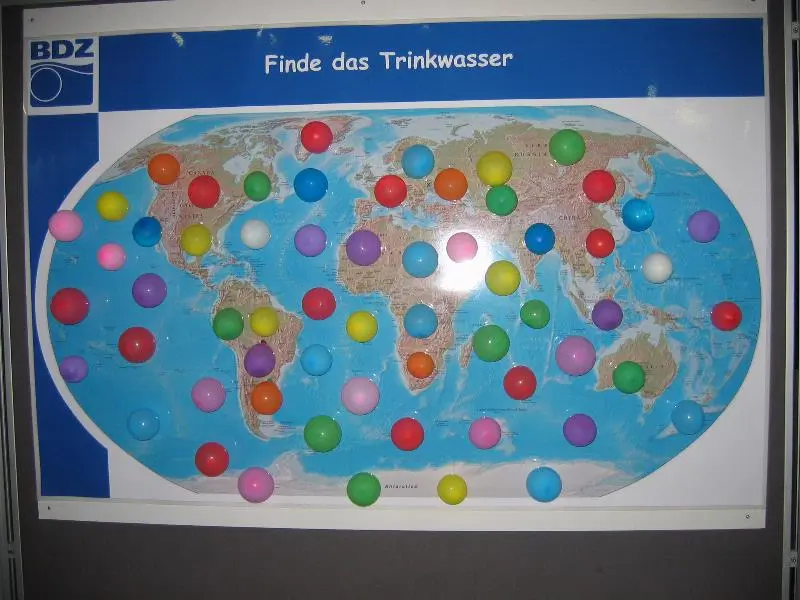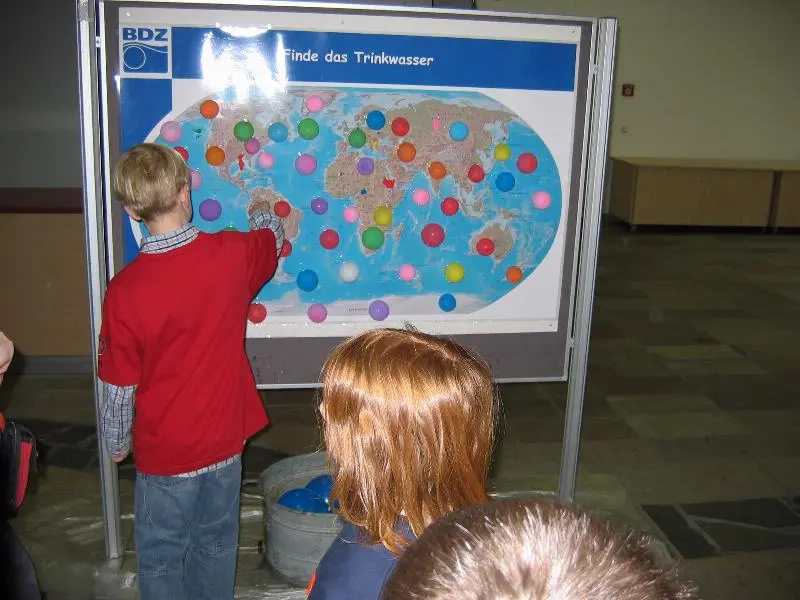Water distribution and use
Pictures taken from space show the earth as a blue planet. Two thirds of the earth's surface is covered with water. The amount of water on our planet is estimated to be around 1.46 billion km³. However, the greatest part of that (97%) is saltwater in the oceans. This experiment illustrates how much of the total water on the planet can be used a drinking water.
Learning goals
- Pupils develop care and concern for water as a scarce resource and an awareness of the need to preserve and conserve water resources.
- Pupils obtain a feeling for different water amounts.
Background information
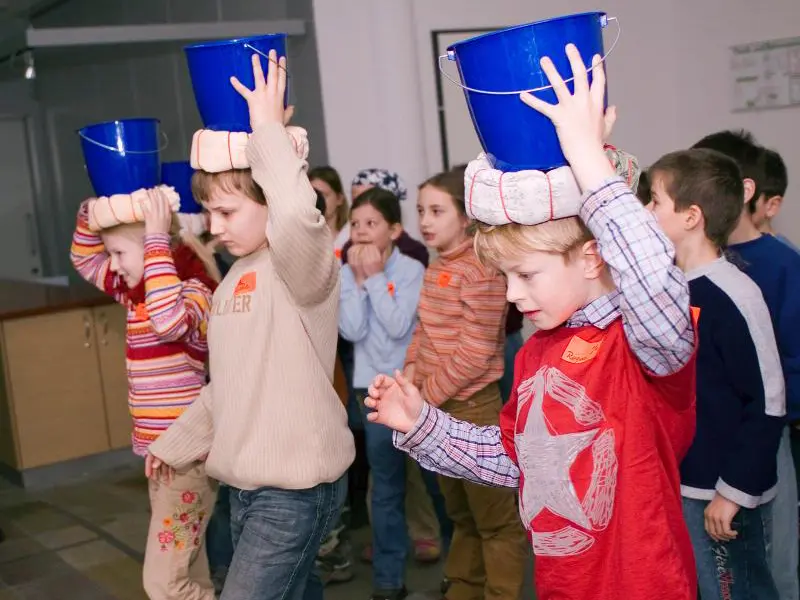
The portion of fresh water, which can be used by humans, is only 3% of the total amount of water on our planet. Most of that fresh water is stored as ice at the poles and as glaciers and groundwater. Only a very small portion can be found in rivers, lakes and streams.
Northern Europe is rich in fresh water. It is situated in a temperate climate, where it rains or snows all year round.
There are areas in the world, where it rains almost every day, like in rain forests, but there are also very dry areas, for example, in Southern Europe, Asia and Africa. The freshwater is distributed very unevenly in the world. In many countries of Africa and Asia, water is very scarce. In some areas of Africa, people only have about 1-2 buckets of water at their disposal per day. In Europe, we use approximately 13 buckets per person.
Water consumption in Europe:
- 3-6 litres per day for eating and drinking
- 3-10 litres per day for cleaning
- 5-15 litres per day for dishwashing
- 15 l/min for showering
- 20-50 litres for washing clothes
- 20-50 litres per day for toilet flushing
- 150 litres for bathing
Time requirement
- Preparation time:20-30 min
- Teaching time: 30-45 min
Material requirement
- Graduated beaker
- Water
- Global map
- Spoons
- Salt
- Graduated cylinder 100 ml
- Graduated cylinder 10 ml
- Pipette or eyedropper
- Small bucket or plate
- Darts
- Balloons
- Water buckets
- Towels
- Jars
- Measuring cup
Let's start
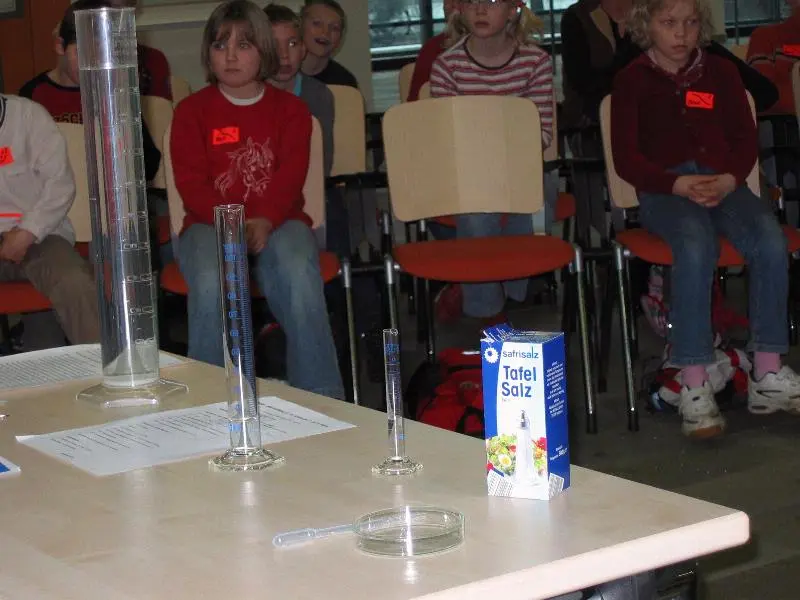
Demonstration: Put one litre (1000 ml) of water on the front desk and ask the pupils to imagine this as the total amount of water on earth. Ask thepupils to indicate on a globe or a map where most of the water on earth is located. Pour 25 ml of the water into a graduate cylinder. Explain that this represents the global freshwater resource. Put salt into the remaining 975 ml to simulate water found in oceans, unsuitable for human consumption. Askpupils if all the freshwater is available as drinking water. Explain that almost 80% of the fresh water is frozen in ice caps and glaciers. Pour 5 ml of freshwater into a small graduated cylinder. This amount represents the freshwater resource on earth that is not frozen. Explain that not all of this water is available as drinking water (ground water, pollution, remote areas). Use the pipette to place only 1 drop of water into a small bucket or plate. This drop represents the clean fresh water on the planet that can be used as drinking water. Discuss this demonstration with the pupils, considering pollution, personal use, population growth or climatic change.
Action game: The global water distribution is represented by multi-coloured balloons (about 40 balloons) fixed on a large world map. The balloons in areas where drinking water is abundant are filled with water; those in dry regions or oceans only contain air. The task for each pupil is to identify the balloons filled with water and to hit as many water-filled balloons as possible with darts. Each water-filled balloon that burst counts for one point and the successful pupil receives a glass marble as prize.
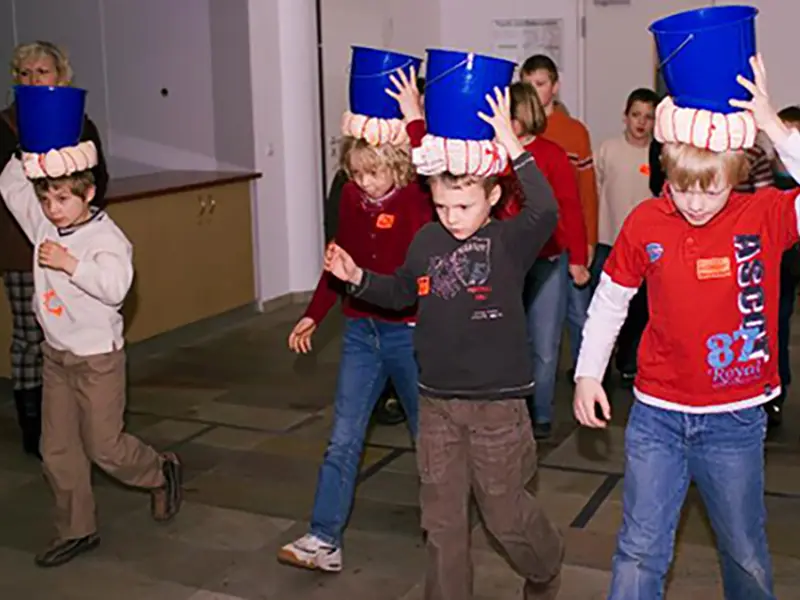
Balance race: The exercise consists of a footrace carrying a plastic bucket with 3 water-filled balloons on the head. The bucket is stabilized on the head by a cloth hoop. It is allowed to stop and readjust the bucket in case of it being in danger to slide down. The distance of the race is about 40 m going 20 m back and forth. The bucket is passed to the next member of the group (relay). That group wins whose last pupil passes the finish line first. Each pupil who transports the bucket without loosing a balloon receives one point and the winning group gets two additional points. In the case of a fallen bucket the pupil has to refill the bucket and return the starting line.
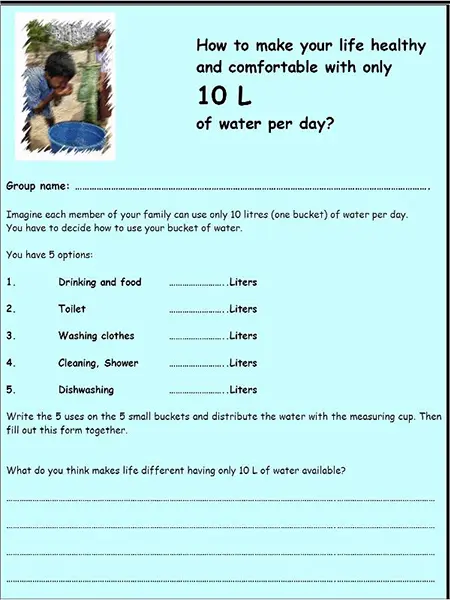
Role play: Have pupils work in small groups. Provide each group with a bucket of water, jars and the working sheet. Tell the pupils to remember how much water we use in Europe every day (12 buckets). Ask the pupils to imagine life with only one bucket of water per day. Have groups making a decision on what they would use the water for. Explain that humans need 3-4 L of water per day only as drinking water and food. Remember the sanitary aspects and tell them they should distribute the water to make their life healthy and comfortable. Explain that each jar represents one of the uses given in the work sheet. Tell them that they should use the measuring cup to distribute the water. Ask students to imagine the main differences of living with little or much water. Ask the representative of each group to present their results.
See and feel
- Relation between different volumes of water
- Where are the most water filled ballons?
Didactical comments
Brainstorm how we use water. Have each pupil to find an example of when water is being used.
